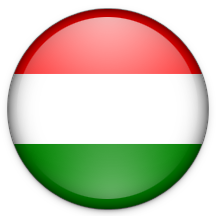Ungvár (Uzhhorod) Traditional Cache
This cache has been locked, but it is available for viewing.
-
Difficulty:
-

-
Terrain:
-

Size:  (small)
(small)
Please note Use of geocaching.com services is subject to the terms and conditions
in our disclaimer.
 Several theories exist about the founding of the settlement.
Several theories exist about the founding of the settlement.
In the 9th and 10th centuries Ungvár meant only the castle.
After the arrival of the Hungarians, the small town began to extend its borders.
In 1241–1242 the Tatars of Batu Khan burnt the settlement. After that the county system was established, Nagykapos became the centre of Ung County, Ungvár was only a district centre.
From 1318 for 360 years, the Drugeths (Italian counts) owned the town. During that period Philip Drugeth built Uzhhorod Castle. German, Flemish and Italian settlers moved in and soon after the trading began to flourish. A new bringe was build ont he Ung river. By 1430, Uzhhorod acquired some privileges from the king and was officially called "The Privileged City of Ungvár" and became capital of Ung County. During the 16–17th centuries there were many handicraft corporations in Uzhhorod.
During the time of reformation Ungvár bacame an important Protestant centre. In 1598 a Reformed school was founded. In 1610 Péter Pázmány converted György Drugeth back to Catholic faith. In this period the city was engaged in the religious fights between Protestant German settlers and Jesuits.
In 1646 in the chapel of the fortress the Ungvár Union was proclaimed, the Hungarian Orthodox Church returned to Rome, the Greek Catholic Church was established.
In 1769 Ungvár became the centre of Ung County.
In 1872 the first railway line opened, linking the city to the important railway junction of Csap (Chop).
Between 1919 and 1938 the city belonged to Czechoslovakia, in 1938 it returned to Hungary according to the First Vienna Award. The Red Army occupied the city in 1944, a year later the entire Subcarpathia, as part of the Ukrainian SSR was transferred to the Soviet Union. In 1991 Ukraine bacame independent. After the collapse of the Sovie market Ungvár had to face gradual degradation, the industrial plants ceased and services deteriorated. Ungvár stepped into a new development stage with the improving Hungarian - Ukrainian and Ukrainian - Slovak relations.
 A város megalapítását illetöen többféle elmélet létezik.
A város megalapítását illetöen többféle elmélet létezik.
Ungvár a 9–10. században leginkább a város területén álló várat jelentette.
A honfoglalást követö, de leginkább az Árpád-házi idökben kétségkívül magyar végvárként szolgált. Az I. (Szent) István által alapított várispánságok egyike volt Ungvár, amelyhez 18 község tartozott.
Az 1241-42. évi tatárjárás súlyos károkat okozott a várban. Ezt követöen alakult ki a vármegyerendszer. Nagykapos központtal jött létre Ung vármegye, amelyben Ungvár csak járásközponti szerepet töltött be.
1318-ban került Ungvár vára a Drugeth olasz származású család kezére, akik hozzáláttak a vár újjáépítéséhez. Ekkor költöztek a városba leginkább német, flamand és olasz telepesek, akik hamar felvirágoztatták a kereskedelmet. Ekkor épült új híd az Ung folyón. 1430-ban Ungvár szabad királyi város kiváltságos címet kapott, ez egyben a városi polgárság megerösödését is jelentette. A 16–17. században különbözö manufaktúrák jöttek létre a városban.
A reformáció idején Ungvár komoly protestáns központtá alakult. 1598-ban megalakult a református iskola is. 1610-ben azonban Pázmány Péter visszatérítette Drugeth Györgyöt a katolikus hitre. Ebben az idöszakban komoly vallási harcok indultak a német protestáns telepesek, illetve a jezsuiták között.
1646. április 24-én az ungvári vár kápolnájában jött létre az Unió, amelynek értelmében a magyarországi orthodox egyház áttért a római pápa fennhatósága alá. Így új vallás született a városban, a görög katolikus felekezet.
1769-ben Ung vármegye székhelye Nagykaposról Ungvárra került át.
1872-ben épült meg a Magyar Északkeleti Vaspálya Társaság tulajdonát képezö Csap – Ungvár vasútvonal, amely az államosítás során hamar a Magyar Államvasutak kezébe került.
1919 és 1938 között a város Csehszlovákiához tartozott, majd az 1938-as 1. Bécsi döntést követöen ismét Magyarországhoz tartozott. A Vörös Hadsereg 1944 december 27-én foglalta el a várost, és 1945-ben, akárcsak egész Kárpátalja, az Ukrán SzSzK részeként Ungvár is a Szovjetunióhoz került. Ukrajna 1991-es függetlenedésével Ungvárnak fokozatos leépítésekkel kellett szembenéznie, megszüntek a nehézipari üzemek, a szolgáltatás nagymértékben romlott, ám a rendezödö magyar-ukrán, illetve szlovák-ukrán kapcsolatokkal Ungvár új fejlödési idöszakba lépett.

Additional Hints
(Decrypt)
ol qbbejnl
xnchalíyáf zryyrgg